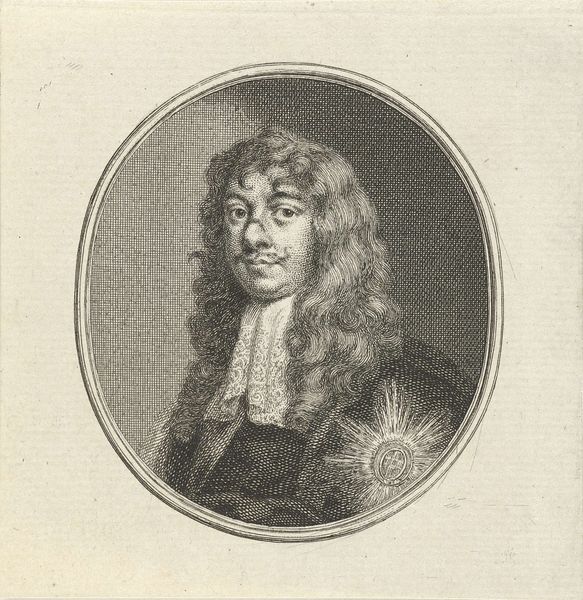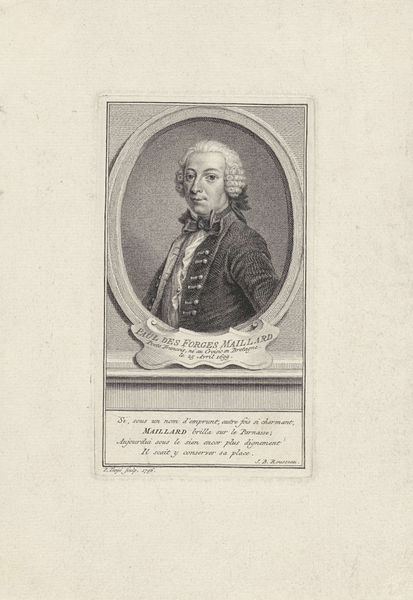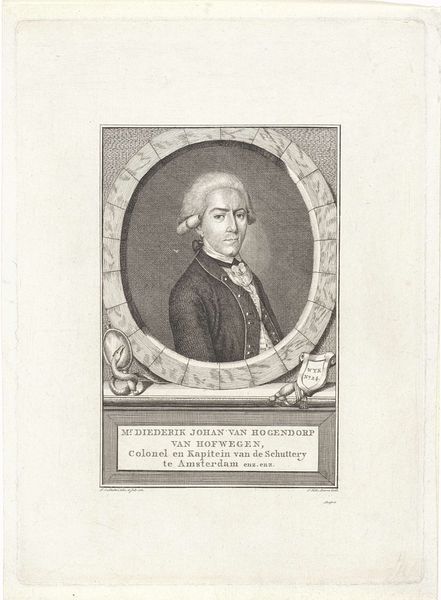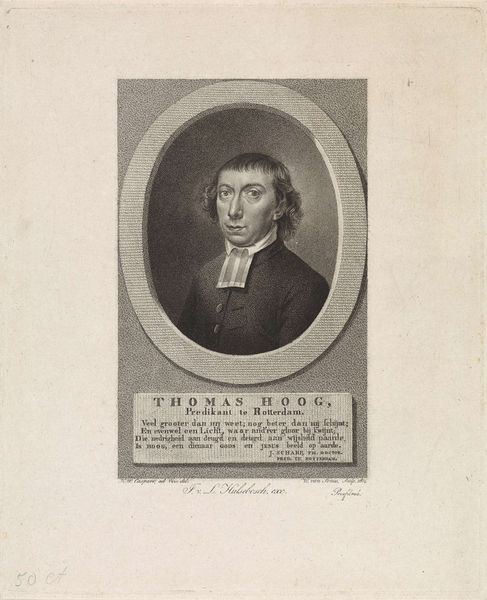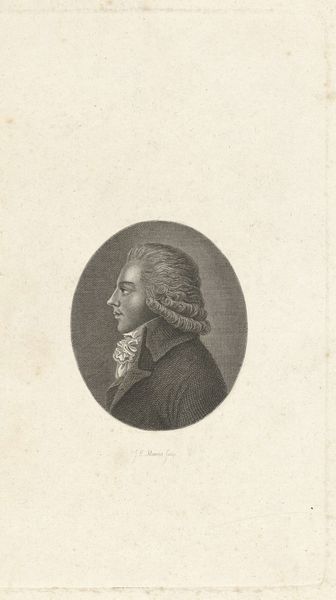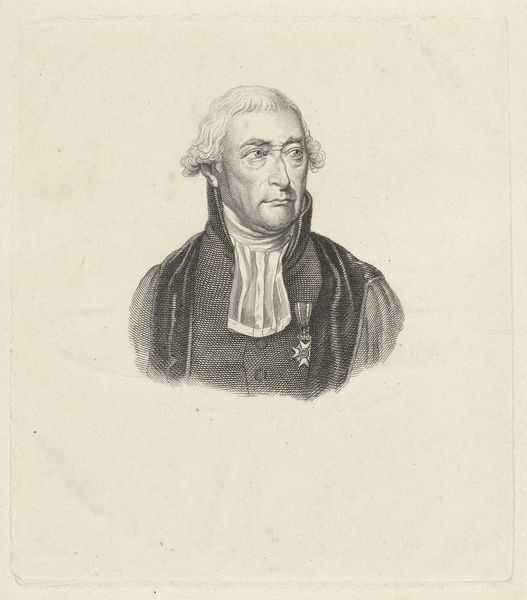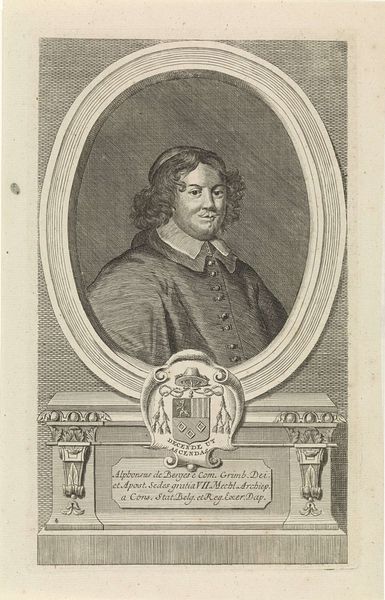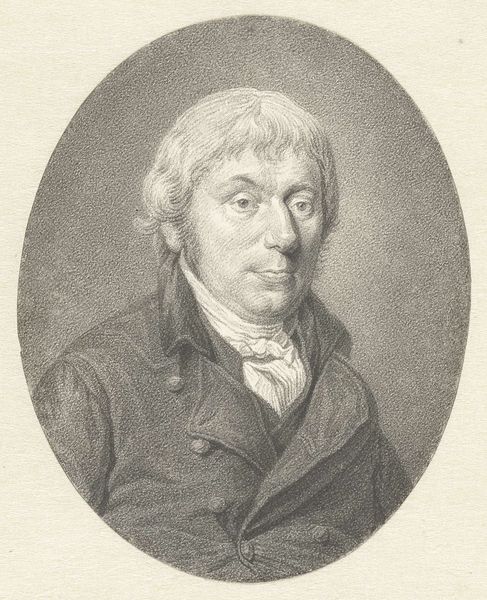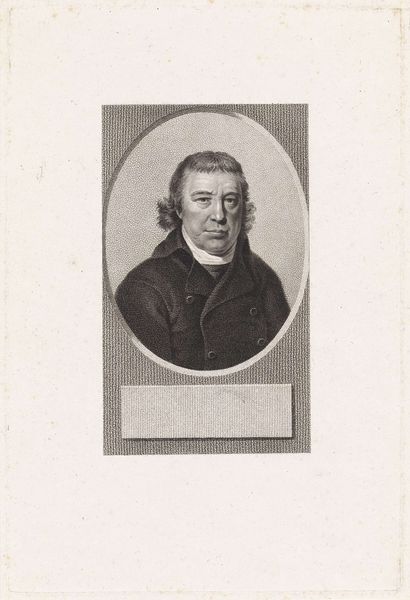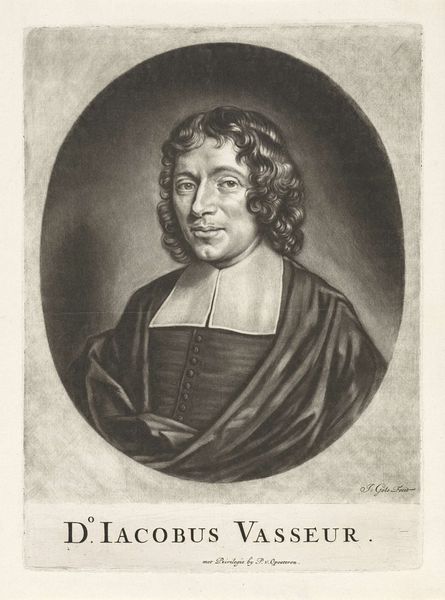
intaglio, engraving
#
portrait
#
neoclacissism
#
intaglio
#
old engraving style
#
history-painting
#
engraving
Dimensions: height 129 mm, width 87 mm
Copyright: Rijks Museum: Open Domain
Curator: This intaglio engraving, residing here at the Rijksmuseum, offers a fascinating glimpse into Napoleon Bonaparte's early years. It is entitled "Portret van Napoleon I Bonaparte, keizer der Fransen", which translates to "Portrait of Napoleon I Bonaparte, Emperor of the French" Editor: Even in this relatively small portrait, something about his gaze feels remarkably self-assured, even imperious. You can already see hints of the leader he would become. Curator: Absolutely. Created around 1797, this piece highlights a very specific historical moment—the rise of Napoleon as a military figure but before he declared himself emperor. The neoclassical style contributes to an air of Roman grandeur and a historical association of power. Editor: That contrast between the fine lines of the engraving itself and the raw ambition it captures is striking to me. Can you say a bit about the choice of printmaking? It feels like quite a democratizing approach to portraiture. Curator: That is a key consideration. Prints allowed for the relatively mass production and dissemination of images, making Napoleon’s image available to a broader public and contributing to his carefully cultivated persona. Consider the labor and skill that went into meticulously creating the matrix for these engravings. This helped cement not just visibility but political power for the subject of the work, since many eyes would come to recognize Napoleon from these very pieces. Editor: So it's less about the aura of a unique masterpiece and more about image circulation. That makes me consider who specifically would be consuming and circulating this portrait, and how they would've experienced this image of a rising star during a tumultuous time. The power of visual propaganda is evident even at this scale. Curator: Indeed. And the very materials and labor—the engraver's skill, the quality of the paper—speak volumes about the resources deployed to propagate a certain image of power and leadership. This portrait serves as a reminder of the intertwined relationship between art, politics, and the making of history. Editor: It has been fascinating to view this work through that particular material lens and realize how deeply entwined history and art are. Curator: Indeed, let’s move on to the next exhibit.
Comments
No comments
Be the first to comment and join the conversation on the ultimate creative platform.
